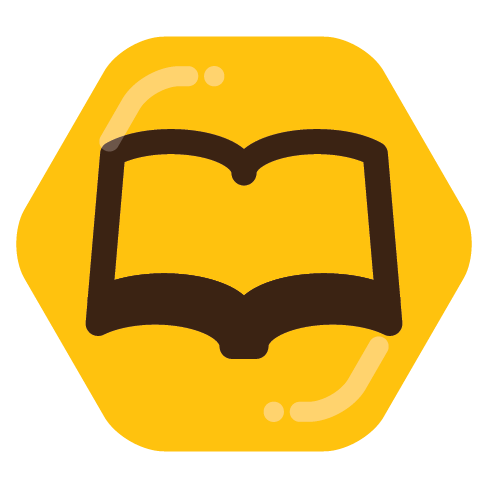August 12th marks the 65th anniversary of Dr. Seuss’s Green Eggs and Ham, a book whose orange cover fills me with delicious nostalgia. Svetlana Boym defines nostalgia as “a longing for a home that no longer exists or has never existed.” What imaginary home do I miss so much? And why do so many of us miss this same place?
As a children’s librarian who also teaches a graduate course on the History of Children’s Literature, I struggle with the question of how to present Dr. Seuss, aka Theodor Geisel. It is now widely known that Geisel’s political cartoons during WWII and early children’s books contained offensive depictions of Asian, Arctic Indigenous, Middle Eastern and African people.
My students of all ages devour Seuss. In my library in Queens, NY, kindergarteners through second graders clamor for Green Eggs and Ham after binge-watching the 2019 Netflix series of the same title (and all the Grinch and Lorax movies too). I will confess: when Random House offered my school the loan of a free Grinch costume of Broadway production quality, I jumped at the chance to host a holiday event where students could help grow the Grinch’s heart through acts of kindness. Geisel isn’t my students’ role model, but the Grinch is a fun cultural symbol that unites a variety of people. The event stirred up Seussmania, and library checkouts soared.
So while I do continue to read Dr. Seuss, I also reject Geisel as a cultural ambassador for children’s literature. For over two decades, schools have celebrated the National Education Association’s Read Across America Day on Dr. Seuss’s birthday, March 2, with children dressing up in red and white striped hats to represent their commitment to reading—as if Seuss were representative of all children’s books. In 2017, Katie Ishizuka-Stephens, Director of the Conscious Kid Library, asked the NEA to reevaluate their approach.
Ishizuka-Stephens’s report emerged the same year that Cambridge, MA librarian Liz Phipps Soeiro made headlines for rejecting First Lady Melania Trump gift of ten Dr. Seuss books, including Green Eggs and Ham, to her top-performing school in 2017. She described Seuss as a “cliche” and “tired and worn ambassador of children’s literature,” and recommended a list of ten diverse books instead. The ten books Soerio recommends are excellent additions to any library, but I wished for the inclusion of a silly, Mo Willems text or, better yet, a wacky book by a non-white author. Kids need to have belly laughs and almost pee their pants when reading—which is something that few other authors besides Seuss can do without invoking potty humor. I’m eager for more silliness.
I think it illustrates why we teach history, and why we should always teach it as truthfully as possible. He wrote some genuinely good, arguably timeless, children’s books, and he was a human being who held some viewpoints that haven’t aged well. I don’t think it makes him a particularly bad person. Just a normal complex one. Besides, when we cancel people for effectively being a normal person of 50, 60, 70, 100, etc. years ago, it feeds the bullshit conservative message of a woke agenda. We should be smart enough to understand that people are capable of doing good and bad things.
There’s a lot of nuance here. I don’t think someone of the past should be condemned for today’s views, and I think people deserve to be judged by the standards of their time. For example, see the Libyans in Back to the Future which were likely not intended to offend anyone despite today being horribly unacceptable.
That being said, the books read to children should accurately portray today’s society. Young children won’t be exposed to all the nuances of society across history. Whether his books accurately represent today’s society is up for debate, but I’m sure there are better options now.
I think we need to give kids more credit for being able to handle nuance, too. I clearly remember being amused as a tyke at the efforts of adults to ‘protect’ me from things I already knew quite a lot about.
I never needed anyone to explain to me just how risible Mickey Rooney’s character in Breakfast at Tiffany’s was. I had only met a few folks of asian background by that point in real life and it was hard to even tell what he was parodying. It had no relation to even my limited exposure to non-white cultures and people.
“Ancient Chinese secret, huh?” IYKYK
In our schools and library Dr. Suess has just been one author among hundreds. No need to move on, just know there’s a lot more children’s lit out there.
I may not agree with any of the offensive depictions he may have depicted, but there’s absolutely no denying his works have been very influential on getting young kids to actually find books they enjoy without resorting to their pretty low brow humor.
If I ever have a kid ( hahahahahahahahahahahahaha, I’m hilarious, I know ), I wouldn’t necessarily just stick with his books, but they’d be in rotation.
kindergarteners through second graders clamor for Green Eggs and Ham after binge-watching the 2019 Netflix series of the same title
I don’t have kids, and most of my friends don’t, so I’d never heard about this…
the book is 65 pages long according to Amazon.
the series has 23 half-hour episodes.
moving on from Dr. Seuss seems totally reasonable to me - but “Netflix adapted a 60-page picture book into 12 hours of TV content” shows why it seems unlikely.
everything in media is more or less required to be a franchise now. if you want a book to read to your kid that’s as good or better than The Cat in the Hat, I’m sure there are plenty. the article gives several possibilities. but as far as media executives are concerned, they don’t want just a book - it needs to be a whole-ass ecosystem.
they’re making a Cat in the Hat movie. they already made one in 2003. it had a budget of $109 million, but only made $134 million at the box office…which means it’s considered a failure. I suspect the bigger problem, besides making only $25 million in profit, is that it was so bad that Seuss’s widow prohibited them from developing a sequel.
so they’re making another one, this one entirely animated. I was going to make a joke about a “Dr. Seuss Cinematic Universe” but then I scrolled down in that Wikipedia page and I read:
In October 2020, it was announced that the film intends to launch a shared universe with two other animated films. The first, Thing One and Thing Two, is expected to be released in 2026. The other, an adaptation of another Dr. Seuss book Oh, the Places You’ll Go!, is scheduled to be released on March 17, 2028. In April 2025, the name of the shared universe was revealed to be “The Seussiverse”.




